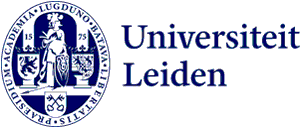
A well-oiled In-house Emergency Service saves lives
During a festive meeting, the In-house Emergency Service (IES) team of the Pieter de la Court Building was pampered by the Faculty Board FSW and the UFB management on 10 February 2022. It was high time to thank the team for their service, drive and commitment. Symbol of this gratitude is the statuette 'Together in an ascending line' which they received.
You are the silent force enabling us to study, teach and work in peace.
'You are there for the academic community to provide first aid in the event of accidents, to contain and fight fires and worse, to limit the consequences of accidents and to alert and evacuate everyone in emergency situations. You are there for us, unconditionally,' said Monique Teufer, director of UFB.

IES in action
Students and staff occasionally see the Pieter de la Court Building's well-oiled IES team in action. In the event of a major incident the first aid officers in the team can do their work quickly and effectively because the others in the team clear the way for them, keep the incident site safe and ensure that the emergency services are adequately attended to. In the case of a smaller incident, some IES team members drop out of work to solve the problem together and resume their work 15 minutes later. In doing so, they leave their students or colleagues in slight disarray to reap gratitude upon their return.
In an emergency every second counts
Everyone has a task in an evacuation: all students and staff present immediately leave the building through the emergency exits, the evacuators encourage them to do so and the IES officers accompany anyone who cannot get out on their own. Finally, the FAFS sweep team checks whether the building is really empty. If everyone cooperates, the building will be empty within 12 minutes. Nicely within the recommended time.
The first time Dean Paul Wouters experienced this, he was confused. I was quietly and intently writing an article. Suddenly I had to leave without my coat and bag. Why couldn't I take them with me? Later I realised that in emergency situations every second counts! Speed of action can save lives.' The Faculty Board is very grateful to the IES team: 'we see you. You are an important part of the academic community.'
What makes an IES team a super team?
For an IES team to develop into a super team, the following things are necessary. Firstly, regular drills must be held. This means practising techniques, such as extinguishing a small fire or first aid. In addition, drills in the building, e.g., an evacuation or a simulated incident ensure a well attuned team. Secondly, team building is essential. This takes place during drills, but also by having a good time together once in a while and by playing a prank via the walkie-talkie at unexpected moments: "Then everyone is alert again!' That is important, because it is difficult to keep one's attention at all times. While the focus is on saving people. Thirdly, aftercare is important after every incident. Assisting at incidents can be a tough job, and the right aftercare helps the team to cope and increases cohesion.
IES's are alway present
Now that we will soon be working more in the Pieter de la Court Building, it is important that the IES team remains at full strength. It is an essential profession, so IES officers are always present. It turns out to be much more difficult to evacuate a relatively empty building than a full one, because then you miss the social pressure of the large group to get out quickly. But even then every second counts and there is no time to grab your coat and bag first.
Author: Gwen Wolters
Photographer: Abel van de Sluis
Statuette: Corry Ammerlaan
